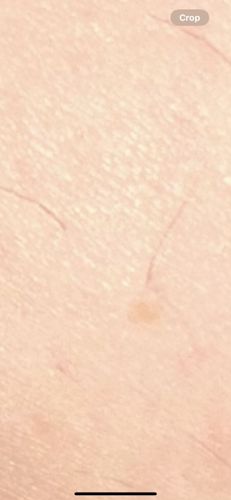Human Skin
Scientific Name: Homo sapiens integumentary system
Order & Family: Primates, Hominidae
Size: Covers approximately 1.5 to 2 square meters for an adult human.

Natural Habitat
Typically found covering the external surface of the human body, in various environments globally.
Diet & Feeding
Not applicable; skin is an organ, not an organism that consumes food.
Behavior Patterns
Skin is a dynamic organ that continuously sheds dead cells, regulates body temperature, produces sweat and oil, and reacts to stimuli (e.g., goosebumps, tanning). The visible lines are a natural part of its texture.
Risks & Benefits
Benefits include protection against pathogens, UV radiation, and dehydration; sensory perception; and thermoregulation. Potential risks include skin conditions (e.g., eczema, acne), infections, and skin cancer due to excessive sun exposure or genetic factors.
Identified on: 9/5/2025